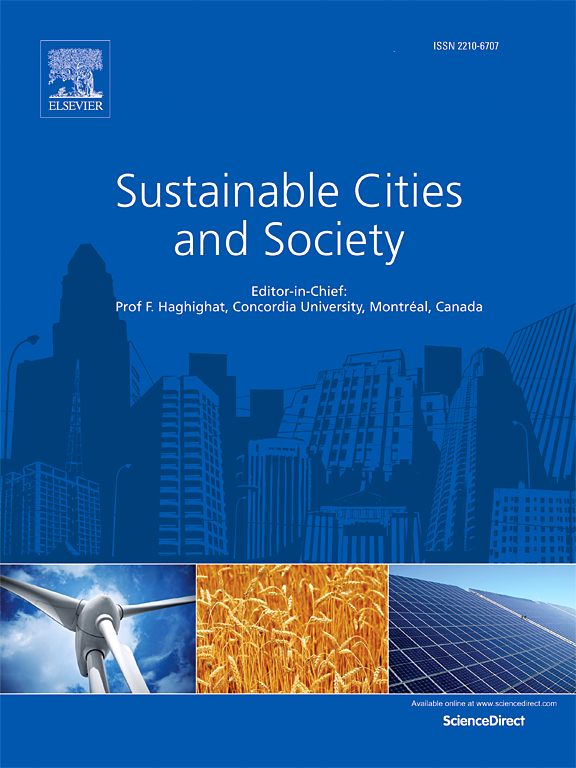Mountainous landscapes and tree species diversity enhance ecosystem multifunctionality in an urban green heart area
IF 10.5
1区 工程技术
Q1 CONSTRUCTION & BUILDING TECHNOLOGY
引用次数: 0
Abstract
Green heart is a form of green space adapted to address urbanization challenges and provides ecosystem services linked to human well-being and the sustainability of surrounding cities. However, it is paucity that ecosystem services, multifunctionality hotspots and their drivers in great heart are determined using fine-scale data of vegetation types and local parameters. We quantified eight ecosystem services and mapped multifunctionality in the world's largest green heart in the center of the Changsha-Zhuzhou-Xiangtan urban agglomeration in China, using field plot inventory data. Multivariate statistical methods were applied to identify key factors affecting multifunctionality. Forests made substantial contributions to most ecosystem services, except for grain production and water yield. Ecosystem services differed among forest types (p < 0.05). Evergreen broadleaved forests had highest net primary production (NPP) and flood risk reduction, while mixed forests performed best in carbon storage and mitigating urban heat island effects. Coniferous forests had highest particulate matter (PM2.5) removal rate. Multifunctionality hotspots were concentrated in the central mountainous areas, dominated by natural broadleaved forests. Biodiversity and mountainous landscapes were the main factors promoting multifunctionality. Therefore, sustainable development policies should focus on protecting natural forests in mountainous areas and biodiversity to enhance green heart multifunctionality and urban resilience.
求助全文
约1分钟内获得全文
求助全文
来源期刊

Sustainable Cities and Society
Social Sciences-Geography, Planning and Development
CiteScore
22.00
自引率
13.70%
发文量
810
审稿时长
27 days
期刊介绍:
Sustainable Cities and Society (SCS) is an international journal that focuses on fundamental and applied research to promote environmentally sustainable and socially resilient cities. The journal welcomes cross-cutting, multi-disciplinary research in various areas, including:
1. Smart cities and resilient environments;
2. Alternative/clean energy sources, energy distribution, distributed energy generation, and energy demand reduction/management;
3. Monitoring and improving air quality in built environment and cities (e.g., healthy built environment and air quality management);
4. Energy efficient, low/zero carbon, and green buildings/communities;
5. Climate change mitigation and adaptation in urban environments;
6. Green infrastructure and BMPs;
7. Environmental Footprint accounting and management;
8. Urban agriculture and forestry;
9. ICT, smart grid and intelligent infrastructure;
10. Urban design/planning, regulations, legislation, certification, economics, and policy;
11. Social aspects, impacts and resiliency of cities;
12. Behavior monitoring, analysis and change within urban communities;
13. Health monitoring and improvement;
14. Nexus issues related to sustainable cities and societies;
15. Smart city governance;
16. Decision Support Systems for trade-off and uncertainty analysis for improved management of cities and society;
17. Big data, machine learning, and artificial intelligence applications and case studies;
18. Critical infrastructure protection, including security, privacy, forensics, and reliability issues of cyber-physical systems.
19. Water footprint reduction and urban water distribution, harvesting, treatment, reuse and management;
20. Waste reduction and recycling;
21. Wastewater collection, treatment and recycling;
22. Smart, clean and healthy transportation systems and infrastructure;
 求助内容:
求助内容: 应助结果提醒方式:
应助结果提醒方式:


